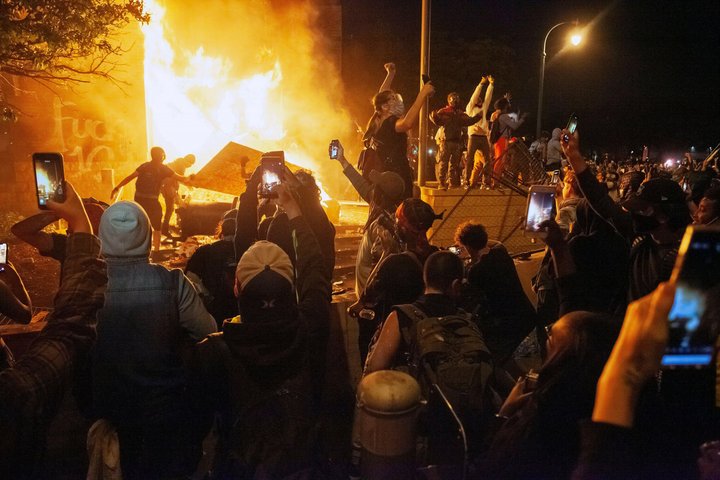
It’s the oldest debate of our democracy: when does a citizen’s behavior merit government control? When it comes to protests and gatherings the Constitution clearly protects speech and the freedom to assemble. With that right comes the responsibility to do so peacefully, or if the intention is to engage in civil disobedience then to expect the consequence of arrest.
The balance between a peaceful protest, an unlawful assembly, and a riot seems to have been lost in recent years. Law enforcement has often been the object of protests while being sworn to protect the protesters and the public. Observers wonder why law enforcement has been aggressively restrained while rioting lawbreakers have been untouched in the wake of vandalism, assault, arson, looting, and inciting to riot.
During preparation for the 2008 Democratic Convention in Denver, Colorado I felt compelled to respond to a complaint registered in the Denver Post that police were being provided with riot gear and military-grade equipment. The writer’s contention, reflecting a common opinion of those who don’t understand the dynamics and risks of public mass disorder, was that the appearance of police in riot gear would actually provoke and cause riots. My response was that firefighters in bunker gear don’t start fires and medical professionals in white coats don’t cause disease.
While reporting from the scene of the Michael Brown shooting in Ferguson in August of 2014, I noticed that officers stationed in the protest area which was still smoldering from businesses set on fire, were not in any safety gear. The reason? It would be bad public relations. Rather expose the officers to bricks and other assaults than provide them with basic protections.
California, in its continuing effort to cripple law enforcement, is at the time of this writing, about to pass legislation that prohibits the use of K9s for crowd control. Evoking images of the 1960s in Birmingham, Alabama, the proponents don’t like the optics of dogs biting humans. San Diego Police Chief David Nisleit opposes the bill. “Our police K-9s are one of our best, if not our best, de-escalation tools. I just want everyone to be aware I understand calls for change in law enforcement, but this is not it,” said Nisleit, but logic and data are of no interest to the anti-police powers.
A case in St. Louis resulted in a liability judgment against Metro Police officers. Officers gave warnings as they monitored an unruly crowd that had begun damaging property. The crowd was then maneuvered into a smaller space where arrests were made, a practice labeled as “kettling”. Whether the legal merits of the case are strong or weak (the 8th Federal Circuit of Appeals ruled that it had merit), it takes away a tool that law enforcement has used to isolate and reduce damage and violence.
In Ohio, officials have agreed to stop using pepper spray or tear gas on peaceful protestors. There are exceptions, but only after an act of violence has been committed. The definition of “peaceful” is an important one, and, as with the kettling case, somebody has to get hurt before the police can act.
During the 2020 riots in Portland, Oregon, which I traveled to cover, the courts prohibited Portland Police from videotaping or live-streaming protestors. Apparently, an attempt to maintain peace by surveilling the crowd for agitators and criminal activity was too invasive. The order didn’t apply to anyone else, and journalists and “legal observers” were exempted not only from videoing activity but given an exception to orders to disperse. Wave your press pass or digital camera and you get special privileges.
And, by the way, don’t use flash-bang distraction devices or pepper spray balls in case somebody who happened to be standing by an agitator with a urine or bleach-filled balloon or bottle, fireworks (commercial grade), or bottle of frozen water being heaved at officers might get a whiff of discomfort (or a piece of a $250,000 settlement).
There is no doubt that 1st Amendment Rights must be scrupulously protected, but the right to destroy property and assault law enforcement won’t be found in the Constitution.